Explore Sukau - Malaysia Travel, Asia
Nestled on the banks of the Kinabatangan River in Sabah, Malaysian Borneo, Sukau is a destination where wildlife, culture, and conservation come together. Known as one of Asia’s top spots for river safaris and eco-tourism, this quiet village offers a front-row seat to encounters with Bornean orangutans, pygmy elephants, proboscis monkeys, and exotic birdlife.
Population: Approximately 1,400 in 2019.
Economy: Sukau’s economy is shaped by its riverine location and natural resources. Traditionally, the Orang Sungai community relied on fishing, small-scale farming, and forest gathering for their livelihood. Today, the village has shifted toward eco-tourism, with river cruises, jungle trekking, and homestays providing income.
Landmarks: Famous for the Kinabatangan River cruises, Gomantong Caves, and Ox-bow lakes and wetlands.
Malaysia
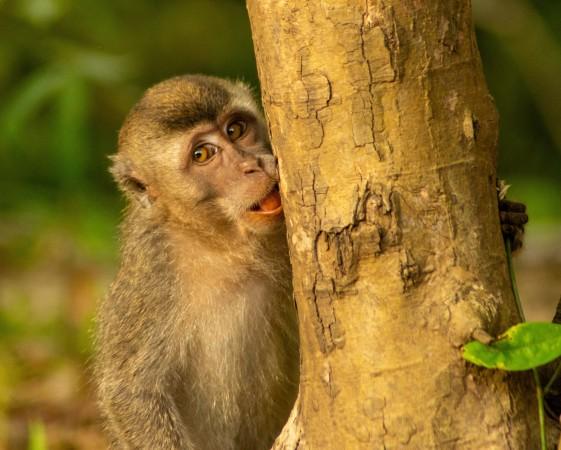
Overview of Sukau
History & Cultural Influence
Sukau’s story begins with the Orang Sungai, also known as the River People, who have lived along the Kinabatangan River for centuries. Their lives revolve around the waterway, which provides food, transport, and spiritual meaning. Fishing, small-scale farming, and forest gathering were once the backbone of their survival.
In recent decades, Sukau has transformed into an eco-tourism hub. Conservation programs emerged as a response to deforestation and wildlife loss, protecting habitats while giving the community a new livelihood.
Interaction with the Locals
A journey to Sukau is also a chance to connect with the Orang Sungai community. Warm and welcoming, they often invite travelers into their daily lives through homestays, storytelling, and traditional cooking sessions. Sharing a meal of freshly caught river fish or learning about medicinal plants from a village elder adds depth to the travel experience.
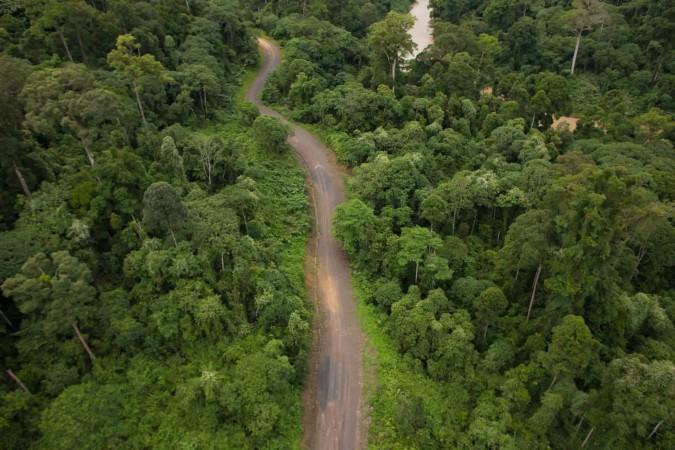
Top Attractions in Sukau
Kinabatangan River
The highlight of any trip to Sukau is the river safari. At sunrise, mist hovers over the water while proboscis monkeys, hornbills, and crocodiles stir along the banks. Evening cruises reveal a different scene with pygmy elephants and fireflies lighting up the night. These wildlife encounters make Sukau one of the best destinations in Sabah for eco-tourism and birdwatching.
Gomantong Caves
Just a short drive from Sukau, the Gomantong Caves offer a glimpse into Sabah’s natural wonders and cultural traditions. The caves are famous for their swiftlet nests, harvested for bird’s nest soup, a delicacy in Asian cuisine. Visitors also witness millions of bats spiraling into the sky at dusk, a spectacle that blends nature and folklore.
Ox-Bow Lakes and Wetlands
Hidden bends of the Kinabatangan River form ox-bow lakes, rich with aquatic life and migratory birds. These wetlands are perfect for photography and quiet observation, giving travelers a chance to experience Borneo’s wilderness away from the crowds.
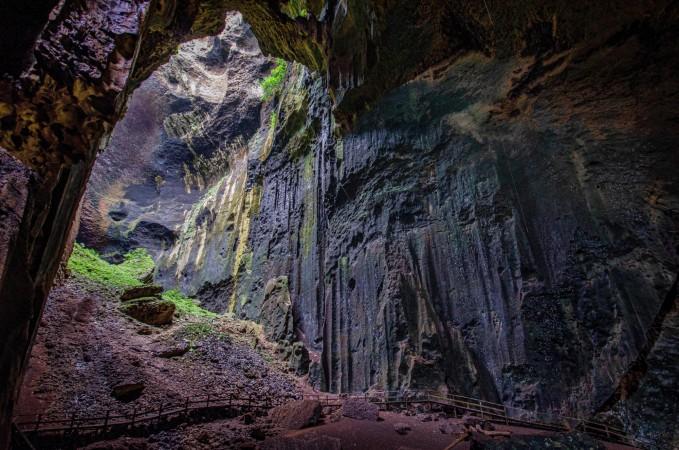
Must-Try Dishes in Sukau
- Hinava: A signature dish across Sabah, hinava is prepared with raw fish marinated in lime, ginger, chili, and bitter gourd. Refreshing and full of flavor, it’s often served during festive gatherings and family meals.
- Bambangan: Unique to Sabah, bambangan is a type of wild mango preserved in its skin and fermented with salt. It pairs perfectly with rice and grilled meats, delivering bold and earthy flavors.
- Tuhau: Tuhau is a traditional Sabahan dish made from wild ginger stems, finely chopped and mixed with lime juice, chili, and salted fish. Its sharp aroma and tangy taste make it a favorite among locals.
- Linopot: During community events, you’ll often see linopot, rice wrapped neatly in banana or tarap leaves. Sometimes it’s served plain, other times it’s flavored with sweet potato or yams. Portable and eco-friendly, it reflects the resourcefulness of indigenous cooking.
- Jungle-Inspired Cooking: Meals in Sukau also feature forest vegetables, bamboo shoots, and medicinal plants foraged from nearby jungles. Traditional cooking techniques, such as steaming food in bamboo or open-fire grilling, keep flavors authentic while preserving nutrients.
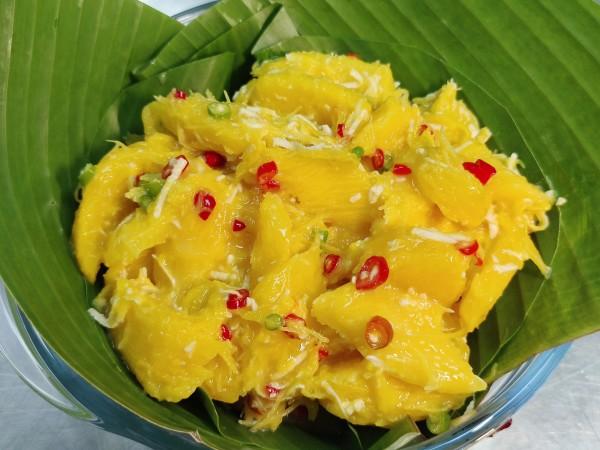
Festivals & Local Celebrations
Kaamatan Festival
The Kaamatan Festival, held every May, is Sabah’s most significant cultural event. Rooted in Kadazan-Dusun traditions, it celebrates the rice harvest with rituals, dance, and traditional music. Visitors can enjoy cultural performances, sample festive foods, and witness age-old practices that honor the rice spirit, a symbol of prosperity and gratitude.
Islamic and Christian Celebrations
As in many parts of Sabah, Sukau is home to a mix of faiths. Travelers visiting during Hari Raya Aidilfitri or Christmas will notice homes decorated, families exchanging food, and communities opening their doors to friends and visitors.
Music, Dance, and Food Traditions
Festivals in Sabah are never complete without gong music, traditional dances, and communal feasts. Local delicacies such as hinava, linopot, and tuhau often feature prominently, allowing travelers to savor authentic flavors while immersing themselves in the cultural rhythm of Borneo.
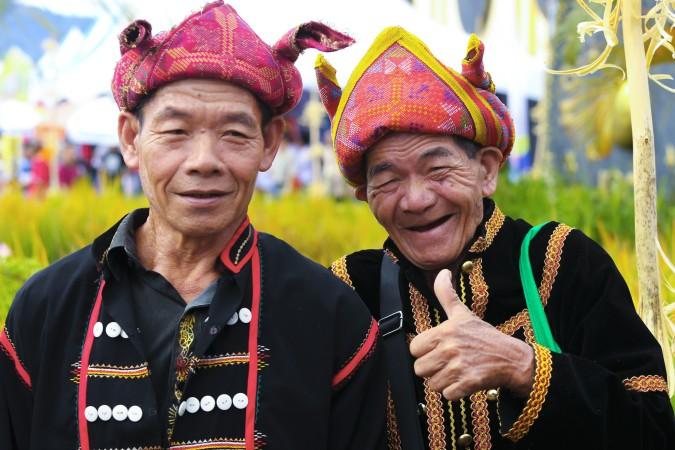
What to Do in Sukau
- Wildlife River Cruises: The most popular activity is the Kinabatangan River cruise. At sunrise or sunset, travelers glide along the water, spotting orangutans, proboscis monkeys, hornbills, crocodiles, and pygmy elephants. Each cruise reveals a new layer of Borneo’s rich biodiversity.
- Night Safaris and Firefly Watching: Evenings in Sukau are magical. Guided night safaris introduce nocturnal creatures like slow lorises, civet cats, and owls. Meanwhile, fireflies light up the riverbanks, creating a glowing display that feels almost otherworldly.
- Jungle Trekking and Nature Walks: For a deeper connection with the rainforest, guided treks lead travelers through trails lined with towering trees, medicinal plants, and rare insects. Birdwatchers will also find Sukau rewarding, with opportunities to spot kingfishers, eagles, and hornbills.
Shopping in Sukau
- Handicrafts by the Orang Sungai: Local artisans produce woven baskets, bamboo crafts, and beadwork, each reflecting river traditions. These items are usually made using natural, eco-friendly materials sourced from the surrounding forests.
- Eco-Friendly Souvenirs: Travelers can also purchase recycled crafts and sustainable souvenirs that fund conservation projects. Items made from bamboo, rattan, and recycled fabrics make thoughtful keepsakes while promoting responsible tourism.
- Market Visits: Though Sukau is small, nearby villages and towns occasionally host local markets, where you can find tropical fruits, forest herbs, and traditional snacks. These visits provide a glimpse into daily life and an opportunity to interact with locals.
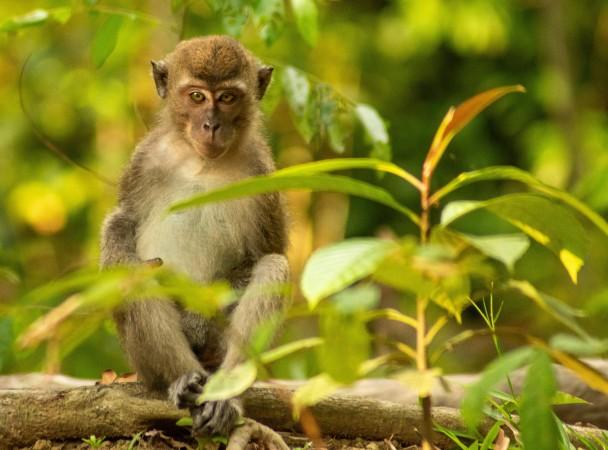
Weather in Sukau: Best Time to Visit
Daytime temperatures in Sukau range between 23°C and 32°C, with cooler nights along the river. Humidity often stays above 80%, so lightweight clothing and breathable fabrics are essential.
Dry Season (March to October)
This is the best time to visit Sukau. The drier months make river cruises more comfortable, and wildlife is easier to spot along the Kinabatangan River. Clear skies also favor birdwatching and outdoor photography.
Wet Season (November to February)
The monsoon season brings heavy rain and occasional flooding. While some activities may be affected, the rainforest looks lush and vibrant, with plenty of migratory birds and active wildlife. Visitors should carry waterproof gear and plan for flexible itineraries.
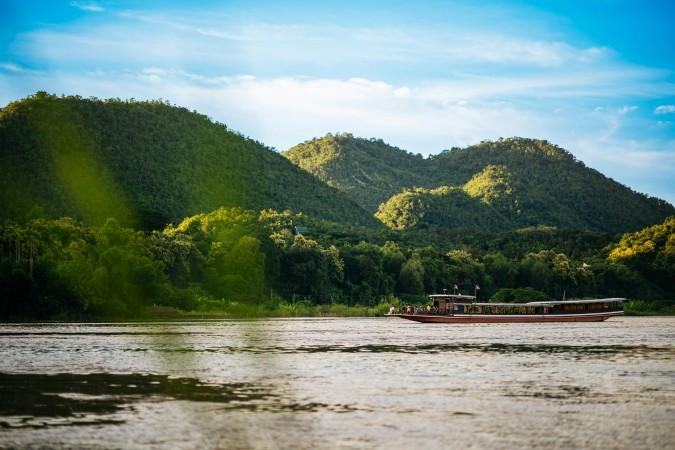
Cruising the Kinabatangan River by CHUTTERSNAP
Essential Travel Information
Getting Around Sukau
The Kinabatangan River is the main highway. Longboats and small motorized boats are the standard mode of transport for wildlife cruises, transfers to eco-lodges, and exploring ox-bow lakes. Walking or cycling around the village offers a slower pace to connect with locals and observe daily life.
ATM & Banking Services
There are no ATMs in Sukau itself. The nearest machines are in Sandakan or Lahad Datu, both a few hours’ drive away. Withdraw enough cash before traveling to cover accommodation, meals, tours, and souvenirs because credit cards are accepted only in some mid-range lodges or with larger tour operators.
Where to Stay in Sukau
- Eco-Lodges by the River: Eco-lodges provide cozy rooms, guided river safaris, and jungle treks. Many are built with natural materials, blending with the environment while offering basic comforts like mosquito nets, fans, and communal dining.
- Homestays with the Orang Sungai: For cultural immersion, homestays are a rewarding choice. Guests live with local families, share meals, and experience traditions firsthand. It’s a chance to build meaningful connections while supporting community livelihoods.
Articles for you

Explore Yala National Park - Sri Lanka Travel, Asia
Tucked away in Sri Lanka’s southeastern corner, Yala National Park is where wild nature meets deep tradition. Known worldwide for its leopard population, the park is also home to elephants, sloth bears, crocodiles, and hundreds of bird species. Beyond wildlife, Yala opens doors to a cultural landscape dotted with ancient temples, Buddhist ruins, and coastal villages. For travelers seeking more than just a safari, Yala offers a chance to explore eco-tourism, local communities, and sacred heritage sites.
Population: The Yala National Park area doesn’t have a human population.
Economy: The economy around Yala National Park thrives on a blend of eco-tourism, agriculture, and local services. Safari tours, eco-lodges, and cultural experiences drive steady income for nearby towns like Tissamaharama and Kataragama, supporting thousands of families.
Landmarks: Famous for Block I of Yala and wildlife encounters, including elephants, sloth bears, crocodiles, and exotic bird species.

Explore Galle - Sri Lanka Travel, Asia
Nestled on Sri Lanka’s southern coastline, Galle is a vibrant city where history meets the sea. Its cobbled streets, colonial architecture, and serene beaches make it a must-visit destination for travelers seeking a blend of culture, adventure, and relaxation. A UNESCO World Heritage site, Galle captivates visitors with its Dutch Fort, bustling markets, and friendly locals. Whether you’re exploring the ramparts at sunset or savoring fresh seafood by the shore, Galle promises an unforgettable journey into Sri Lanka’s heritage.
Population: Approximately 113,000 in 2023.
Economy: Galle’s economy thrives on tourism, trade, and fisheries. The city’s historic fort, colonial architecture, and coastal charm draw thousands of international visitors each year, making tourism its main economic driver. Fishing remains vital for local livelihoods, supplying fresh seafood across the region.
Landmarks: Famous for the Galle Fort, Dutch Reformed Church & Maritime Museum, and Unawatuna Beach.

Explore Bentota - Sri Lanka Travel, Asia
Nestled along Sri Lanka’s southwestern coast, Bentota is a tropical paradise that blends golden beaches, vibrant culture, and thrilling adventures. Famous for its calm waters, luxury resorts, and scenic river estuary, Bentota has become a top destination for travelers seeking both relaxation and authentic experiences. From serene beach walks at sunrise to adrenaline-pumping water sports, this coastal town offers a perfect balance of leisure and exploration. With its proximity to Colombo and Galle, Bentota is easy to reach, making it an ideal stop for both short escapes and extended holidays.
Population: Approximately 37,000 in 2023.
Economy: Bentota’s economy thrives mainly on tourism, which drives local businesses such as hotels, restaurants, and wellness retreats. The town also benefits from fishing, coconut cultivation, and handicrafts like wood carving and batik textiles. Many residents rely on the growing demand for water sports and Ayurvedic treatments, making tourism the backbone of both income and employment in the area.
Landmarks: Famous for Bentota Beach, Bentota River Safari, and Kande Vihara Temple.

Explore Mirissa - Sri Lanka Travel, Asia
Mirissa is a charming coastal town on Sri Lanka’s southern shoreline. Known for its golden beaches, turquoise waters, and vibrant marine life, it has become a must-visit stop for travelers exploring the island. Many come for whale watching, surfing, and sunset views at Coconut Tree Hill, but Mirissa offers much more than postcard beauty. The fishing boats you see anchored by the bay carry generations of stories. Local traditions, delicious cuisine, and a laid-back rhythm of life shape every visitor’s experience.
Population: Approximately 4,700 in 2023.
Economy: Mirissa’s economy is largely shaped by its coastal location. Fishing has long been the backbone of local livelihoods, with generations relying on the Indian Ocean for income. In recent decades, tourism has become the main driver of growth, thanks to whale watching, surfing, and beachside hospitality.
Landmarks: Famous for Mirissa Beach, Coconut Tree Hill, and Parrot Rock Bridge.

Explore Nuwara Eliya - Sri Lanka Travel, Asia
Tucked away in the Central Highlands of Sri Lanka, Nuwara Eliya is often called “Little England”. With its rolling tea plantations, cool misty mornings, and colonial charm, this mountain town feels like a step into another world. Travelers come here to breathe fresh air, walk through flower gardens, sip the finest Ceylon Tea, and enjoy a pace of life far from the island’s busy cities. Whether you’re drawn by scenic landscapes, heritage architecture, or the warmth of its people, Nuwara Eliya is a destination that blends nature, culture, and history in perfect harmony.
Population: Approximately 781,000 in 2023.
Economy: Nuwara Eliya’s economy thrives mainly on tea production, as it sits in the heart of Sri Lanka’s central highlands, famous worldwide for Ceylon Tea. The city also benefits from a growing tourism industry, attracting visitors with its colonial charm, cool climate, and scenic landscapes.
Landmarks: Famous for Gregory Lake, Hakgala Botanical Garden, and Victoria Park.

Explore Sukau - Malaysia Travel, Asia
Nestled on the banks of the Kinabatangan River in Sabah, Malaysian Borneo, Sukau is a destination where wildlife, culture, and conservation come together. Known as one of Asia’s top spots for river safaris and eco-tourism, this quiet village offers a front-row seat to encounters with Bornean orangutans, pygmy elephants, proboscis monkeys, and exotic birdlife.
Population: Approximately 1,400 in 2019.
Economy: Sukau’s economy is shaped by its riverine location and natural resources. Traditionally, the Orang Sungai community relied on fishing, small-scale farming, and forest gathering for their livelihood. Today, the village has shifted toward eco-tourism, with river cruises, jungle trekking, and homestays providing income.
Landmarks: Famous for the Kinabatangan River cruises, Gomantong Caves, and Ox-bow lakes and wetlands.
